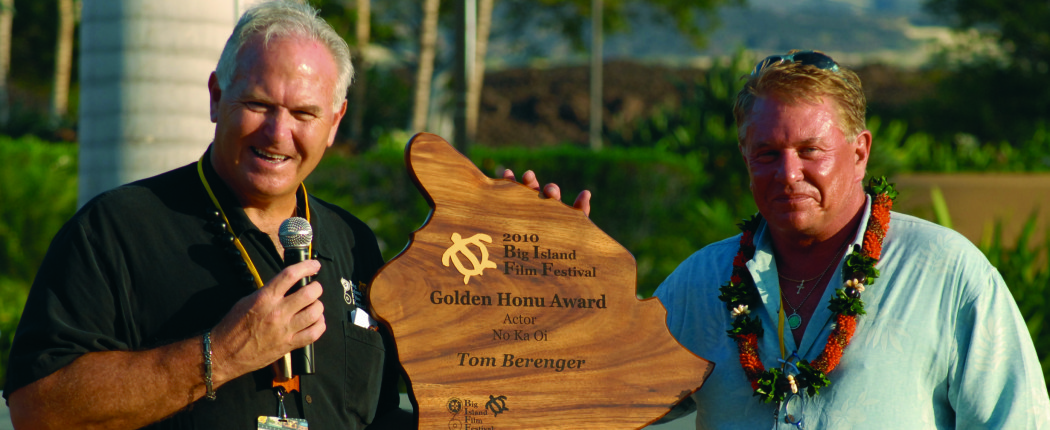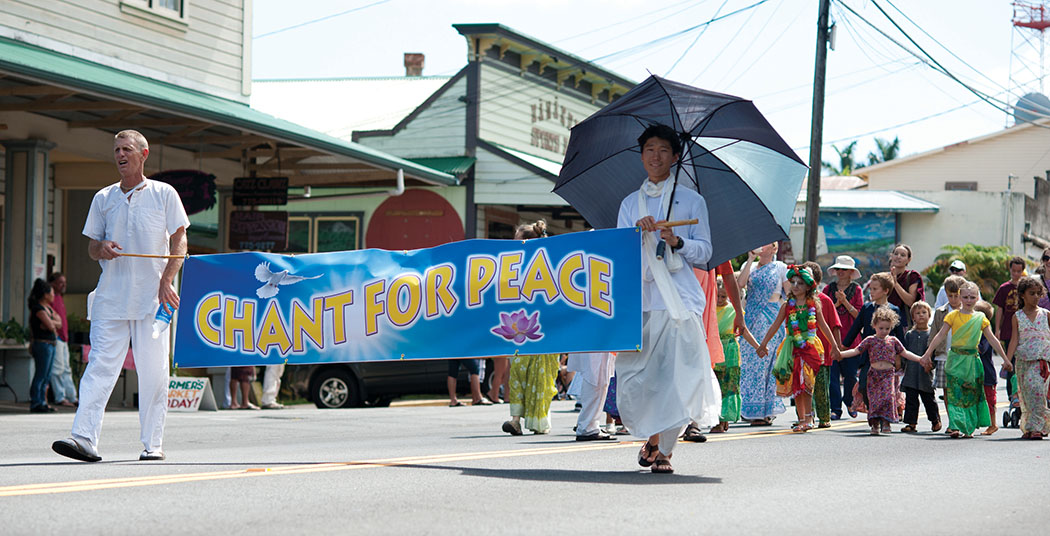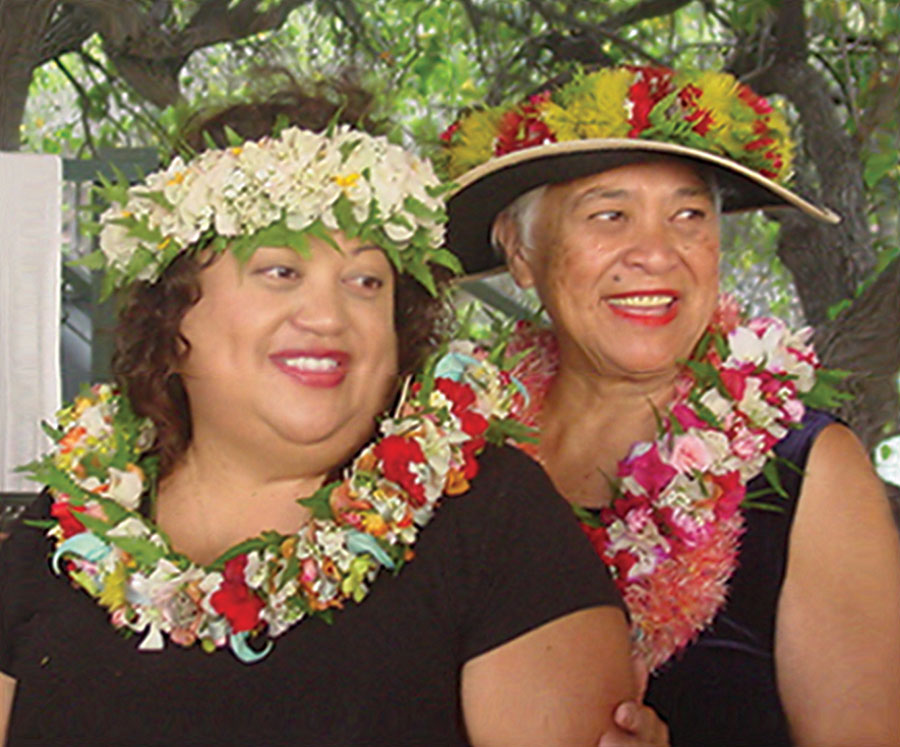
A Hospital for the Birds: Hawai‘i Wildlife Center
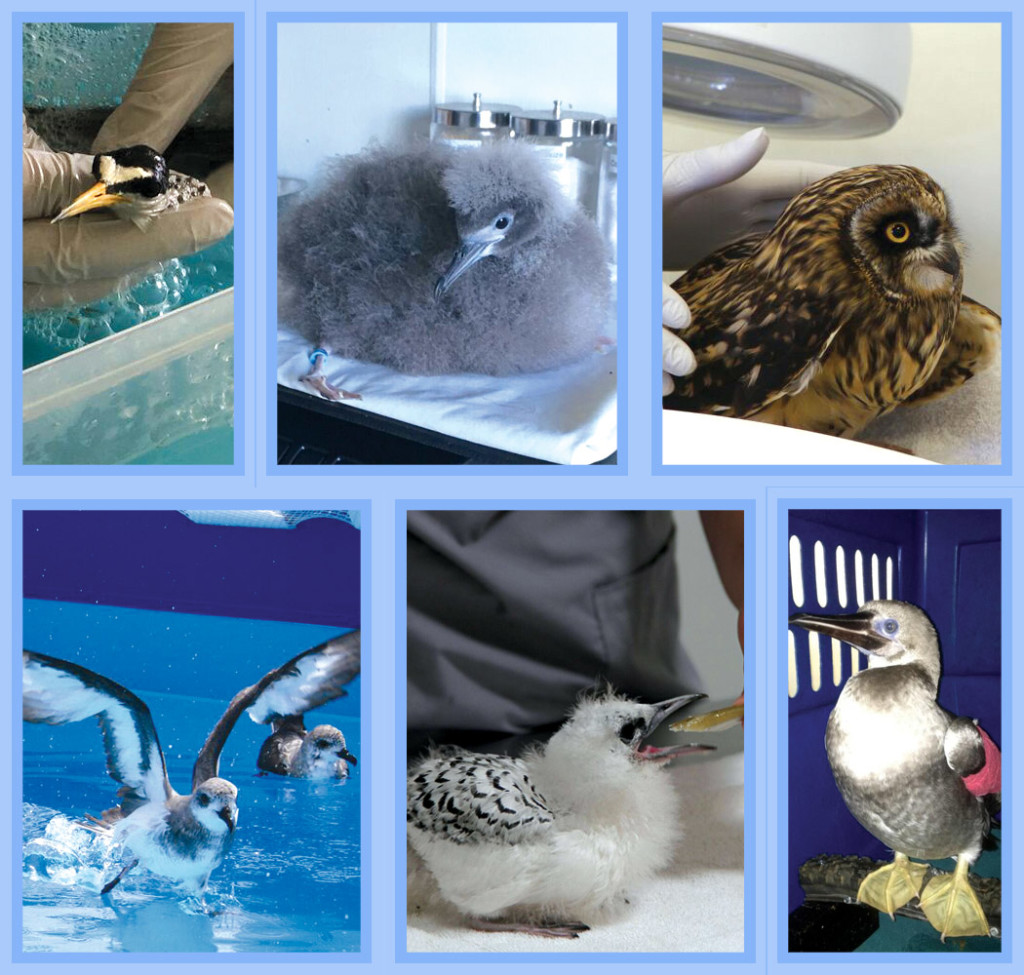
By Catherine Tarleton
Things are hopping at Hawai‘i Wildlife Center in North Kohala—hopping, chirping, swimming, feeding, fledging, healing, and eventually flying.

“Last night, we transported in a seabird from O‘ahu and a pueo (owl) from Kaua‘i,” said President and Center Director Linda Elliott. “We have ten patients at the moment from three islands.”
Hawai‘i Wildlife Center (HWC) is the state’s only hospital and rehabilitation center exclusively for native species. Since it opened in 2012, the skilled team has taken in sick and injured birds and Hawaiian hoary bats, and cared for them with the ultimate goal to release them back into the wild. A 501(c)3 nonprofit organization, HWC is located on 2.2 acres in Kapa‘au.
Facilities include a specialized hospital, clinic, lab and intensive care unit, kitchen, holding rooms and pens, four aviaries customized for forest birds, bird of prey, water birds and seabirds, and exercise swimming pools for the seabirds. There is also a retail shop that carries native wildlife themed merchandise, and educational exhibits in the Ho‘opulama Science and Discovery Center.
Everyone (human) speaks in hushed tones, to deter their feathered friends from becoming frightened, or accustomed to being around people.
“Each year the patient load increases, the number of calls increases,” says Linda. “Last year, we took over 400 calls from the public with wildlife rescue inquiries.” Because HWC specializes in native species of birds and the one native bat, not every call leads to a new patient. Barn owls are often confused with pueo; introduced birds—like mejiro or mynah birds—are mixed up with Hawaiian species.
The public is encouraged to call or email HWC for help identifying found birds, and for instructions on their handling (see sidebar below).
Why Does Wildlife Need a Hospital?
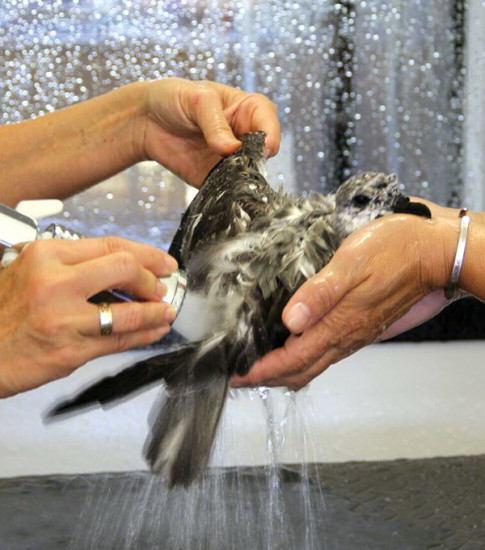
Most of HWC’s patients got sick or injured—directly or indirectly—by human contact. Birds are hit by cars, boats, even golf balls; they could be attacked by pets and feral animals, or catch diseases from cats and insects; other invasive species eat bird eggs and destroy birds’ natural habitats. Seabirds, normally guided by moonlight, will navigate to any bright light source from a parking lot to a cruise ship. They’ll become confused and exhausted and fall to the ground—a common enough problem to have its own name: “seabird fallout.”
The actual treatment areas and hospital are closed to the public in order to protect the patients. However, HWC’s Ho‘opūlama Science and Discovery Center is a fun, colorful and interactive learning exhibit that includes creative displays, hands-on multimedia games, videos, and a step-by-step computer program that lets visitors “play bird doctor” by diagnosing and prescribing treatments for injured patients.
Teaching Birds, exact replicas of ‘apapane (crimson/black Hawaiian honeycreeper) and ‘i‘iwi (scarlet Hawaiian honeycreeper) are featured in the Meet the Honeycreepers exhibit. These cast resin sculptures are created from intricate wood carvings by Haruo Uchiyama of Japan, acclaimed bird sculptor. So precise are his recreations that he makes bird models for a blind school in Japan to teach evolution. There are still Teaching Birds that need to be sponsored and created for the Science and Discovery Center, including a life-size sculpture of a Laysan Albatross, an ocean-going seabird with a six-and-a-half-foot wingspan, which will fly overhead as visitors explore the center.
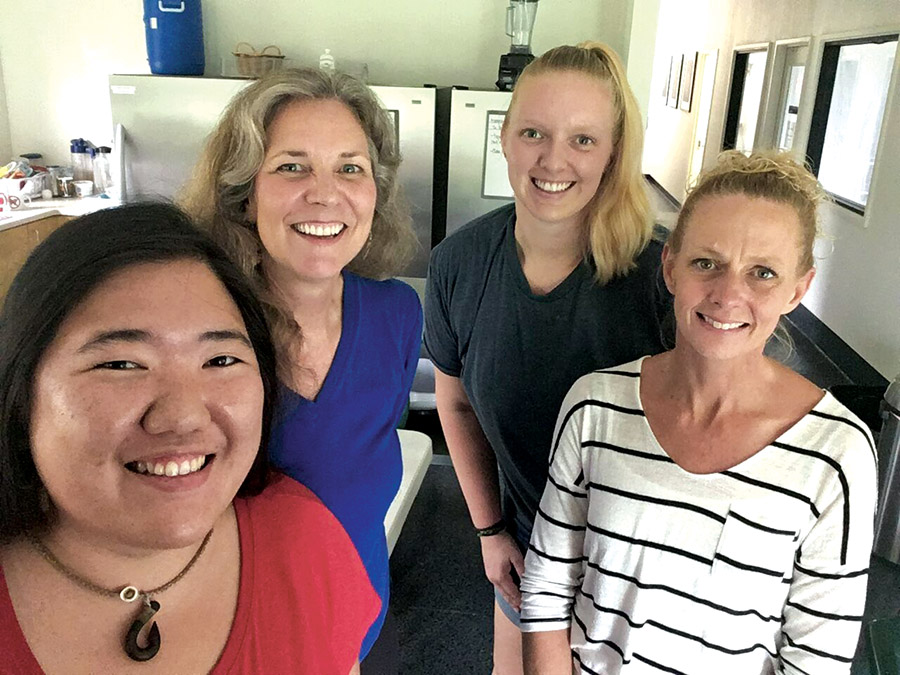
Inspired by Lions
It started when Linda was a child, and saw the movie Born Free for the first time. The story of a British couple’s work with young African lions in Kenya resonated with Linda. “I was able to define my passion from that point on,” she says. “I was an Air Force brat. We moved a lot, and I had a zoo wherever we went. I collected animals to care for—from a horse to turtles and everything in between.”
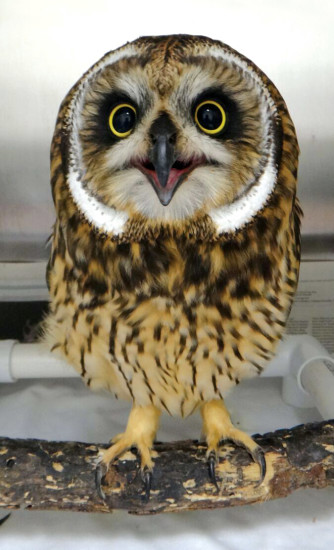
In 1974, Linda and her family moved to O‘ahu where her father was stationed. She graduated from Kalaheo High School, and pursued the sciences fervently.
“It was a little frustrating in Hawai‘i,” Linda says. “There was limited information on our native Hawaiian species. Even at the University of Hawai‘i at Mānoa. I transferred to Arizona State and got a Wildlife Biology degree in 1980.”
She came home to Hawai‘i and got a job with the Honolulu Zoo. “I started out in reptiles,” Linda says. “Then worked each section—birds, mammals. When I left in 1988, I was overseeing the hospital for the whole zoo. It was a fabulous experience to be able to work with so many species in one place. I got to do amazing things.”
Fast-forward a few years, to the construction of the new Hyatt Regency Waikoloa (now Hilton Waikoloa Village). Linda and her husband had honeymooned on Hawai‘i Island, visited often, and relished the idea of moving here. When the position of Wildlife Manager opened up for the Hyatt, she leapt, or flew, at the opportunity.
“I opened the wildlife department. I got all the parrots, swans, crown cranes, a flock of flamingoes… I set up a program, wrote the manual, and then opened Grand Hyatt Wailea on Maui and the Hyatt Regency on Kaua‘i. With the Hyatt on O‘ahu, I was responsible for the wildlife on four properties.”
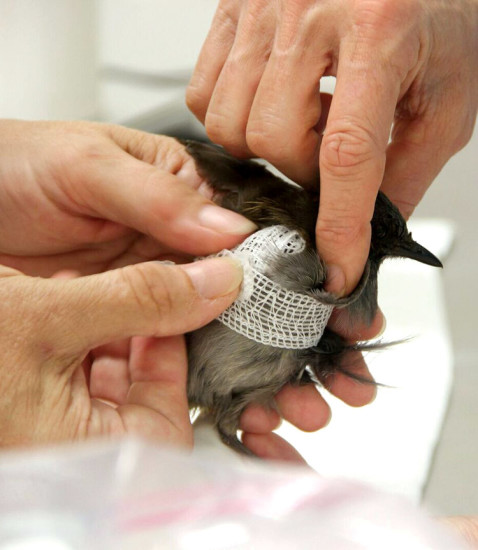
“Hyatt allowed us to create a wildlife rehabilitation program on each island,” says Linda. “The Hyatt Regency Waikoloa was the first resort ever to have native Hawai‘i species exhibited: koloa (Hawaiian duck) and nēnē (Hawaiian goose).”
After five years, Linda moved on when Hilton took over the property. She was approached by the U.S. Fish and Wildlife Service to help with emergency responses, such as avian botulism outbreaks or oil spills, and soon found herself caring for dozens and dozens of patients with zero facilities—working out of trash dumps, abandoned buildings and temporary structures. In all, she responded to eighteen wildlife crises in six countries.
A New Resource for the State

In 2004, she dusted off the business plan she had started for HWC ten years earlier, and worked with the North Kohala Community Resource Center on the project. It was incubated there for two years, and then a major land donor, Surety Kohala Corporation, stepped forward and offered the use of 2.2 acres near Kapa‘au.
“We became our own nonprofit in 2006,” Linda continues. “In 2008 construction started and it was finished in November of 2011. In 2012, we started operations. It was kind of ‘build it they will come.’ Now, we get patients from all the main islands: Maui, O‘ahu, Kaua‘i, the Big Island. We also do projects with the Northwestern Hawaiian Islands. We do conservation translocation programs: like moving 400 nēnē from Kaua‘i to the Big Island and Maui; translocating critically endangered Laysan Ducks from Midway to Kure Atoll.”
If that wasn’t enough, HWC is providing training programs for state and federal wildlife agencies, e.g., oil spills and botulism response. They have a partner operation on Lāna‘i, and in November started a pilot project with the Honolulu Zoo, partnering to create a satellite on O‘ahu. This is particularly needed during the seabird season, September through December, when most young birds are fledging (leaving the nest for their first flight).
A Day in the (Bird) Life
Meanwhile, back in Kapa‘au, the work patiently continues one bird, one bat, one patient at a time. A typical day at HWC might look something like this:
- Prepare food—such as a tasty, grey “seabird slurry,” made from raw fish and vitamins. Feed patients, clean cages, change linens, give checkups and bandage changes.
- Set up the science and discovery center: turn on electronics, wheel out carts, mount exhibit birds.
- Check the bird help email account and phone line for new messages from the previous night or wee hours of the morning.
- Answer rescue calls from public throughout the day.
- Coordinate volunteers for bird pickups; book air travel if it’s a neighbor island bird.
- Organize various volunteer tasks, such as weeding aviaries, native garden maintenance, landscaping.
- Process donations, send acknowledgement letters.
- Afternoon feedings and checkups
- Mouse colony maintenance (for owls and hawks)
- Patient veterinary visits, physical therapy, baths and waterproofing restoration when needed.
- Interact with visitors, answer questions, walk them though the science center, helping at the retail store.
- Take care of evening food prep, feeding, bandage and linen changes. Enter all the patient data and updates into the record keeping system.
Bird lovers and bat fans can help in numerous fun and creative ways. There are sponsorships available for Teaching Birds, including the Laysan Albatross; HWC has an Amazon wish list and Smile program; sales from the artful retail shop, including “Hawai‘i’s Native Winged Wonders,” a coloring book created by students from Kohala Middle School, support HWC; and direct donations are always welcome. Interested humans are encouraged to come and volunteer at the Center, as drivers, or even airplane pilots. ❖

When You Find a Bird Needing Help
For your safety, HWC recommends emailing birdhelp@hawaiiwildlifecenter.org with a photo of the bird, or calling HWC at 808.884.5000 during office hours for instructions. For off-hours assistance, refer to the steps below.
- Find and prepare an appropriate-sized container.
- Use a cardboard box, plastic tub or dog/cat carrier large enough for the bird to comfortably sit or stand in.
- Place a clean, soft cloth with no strings, loops or holes on the bottom. A t-shirt is a good example.
- Make sure there are air holes in the lid.
- For small birds, you can use a paper bag with small ventilation holes and with a paper towel on the bottom.
- Use caution and protect yourself.
- Cover the bird with a lightweight towel, t-shirt, or small sheet, depending on the size of the bird.
- A bird with a long neck and beak should be handled very carefully as they may attempt to strike out and stab. In this case, safety glasses should be worn, or call Hawai‘i Wildlife Center for advice.
- In the event of an injured raptor (hawk or owl) the feet and talons (sharp nails) are dangerous in addition to the beak. Great caution should be used to prevent injury to yourself. If possible, call HWC immediately for instructions.
- Gently pick up the covered bird and place it in the prepared container.
- Do not give food or water to the bird and do not leave any in the container or bag.
- Secure the lid of the box, or roll the top of the paper bag closed and secure with a paper clip or tape.
- Place the container/bag in a quiet and dark place, away from people, animals and loud noises.
- Wash your hands if you handled the bird without gloves.
- Contact and deliver the bird to HWC as soon as possible during business hours. If it is after hours keep the bird in the container in a dark, quiet, and warm area until the next morning.
In Hawai‘i as in most states, it is against the law to keep any wildlife without appropriate rehabilitation permits, even if you plan on releasing them.
All photos courtesy of Hawai‘i Wildlife Center
Ho‘opūlama Science and Discovery Center is open Tuesday–Saturday, 9am–3pm. Admission is free. Donations welcome.
Wildlife Assistance Hours: 7 days a week, 9am–5pm.
Hawai‘i Wildlife Center
53-324 Lighthouse Road, Kapa‘au, HI 96755
808.884.5000
hawaiiwildlifecenter.org
Facebook: facebook.com/hawaiiwildlifecenter
YouTube channel: youtube.com/user/HawaiiWildlifeCenter
Mahalo Kona Coast Realty – Sustainability Story Sponsor
